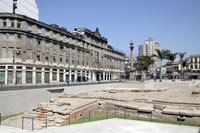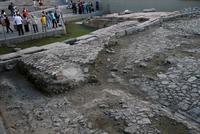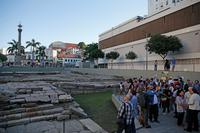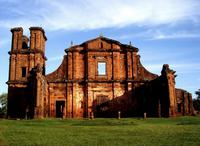You are in: South America -> Brazil -> Valongo Wharf Archae... , and traditional search or Image Gallery will yield results of this site only
Valongo Wharf Archaeological Site
| Site number: | 1548 |
|
| Type of site: | Cultural | |
| Date of Inscription: | 2017 | |
| Location: | South America, Brazil, Rio de Janeiro | |
Up to 75 images are shown here. Click on each for more details or on Image Gallery for more images.
Six official UN languages:
English,
French
Other languages: Croatian, Czech, Poland, Portuguese, Vietnamese
Other languages: Croatian, Czech, Poland, Portuguese, Vietnamese
| Description: | Valongo Wharf Archaeological Site is located in central Rio de Janeiro and encompasses the entirety of Jornal do Comércio Square. It is in the former harbour area of Rio de Janeiro in which the old stone wharf was built for the landing of enslaved Africans reaching the South American continent from 1811 onwards. An estimated 900,000 Africans arrived in South America via Valongo. The physical site is composed of several archaeological layers, the lowest of which consists of floor pavings in pé de moleque style, attributed to the original Valongo Wharf. It is the most important physical trace of the arrival of African slaves on the American continent. --WHMNet's description is from WHC Site, where additional information is available. CC BY-SA 3.0. | |
| The Valongo Wharf (Portuguese: Cais do Valongo) is an old dock located in the port area of Rio de Janeiro, between the current Coelho e Castro and Sacadura Cabral streets. Built in 1811, it was the site of landing and trading of African slaves until 1831, with the ban on the transatlantic slave trade (but clandestine trade continued until 1888). During the twenty years of its operation, between 500 thousand and one million slaves landed at Valongo. Brazil received about 4.9 million slaves through the Atlantic trade. In 1843, the wharf was renovated for the landing of Princess Teresa Cristina of Bourbon-Two Sicilies, who was to marry the emperor D. Pedro II. The wharf was then called Cais da Imperatriz (Empress Wharf). Between 1850 and 1920, the area around the old pier became a space occupied by black slaves or freedmen of several nations - an area that Heitor dos Prazeres called Pequena África (Little Africa). --Wikipedia. Text is available under the Creative Commons Attribution-ShareAlike License. CC BY-SA 3.0. | ||
| Source: | http://whc.unesco.org/en/list/1548. Description is available under license CC-BY-SA IGO 3.0 | |
| Source2: | Wikipedia (http://wikipedia.com). CC BY-SA 3.0. | |
| Reference: | 1. UNESCO World Heritage Center (http://whc.unesco.org/en/list/1548). 2. Wikipedia. CC BY-SA 3.0. | |






